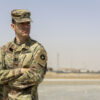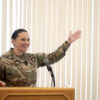Minnesota: ‘We are an Arctic Nation’
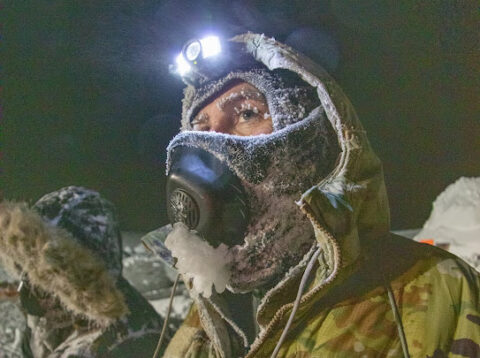
Blizzards, negative temperatures, and ice are hometown norms for members of the Minnesota National Guard. However, after more than two decades of desert warfare, the National Guard is mixing snow with sand. This additional emphasis on Arctic operations also highlights the necessary cooperation and readiness needed to be an active player in the Arctic Circle.
“What’s important to realize here is there are only five countries that boarder the Arctic, with the U.S. being one of them by way of Alaska,” explained Chief Master Sgt. Jeremiah Wickenhauser, Superintendent for the 133rd Contingency Response Team. “We are an Arctic nation.”
The five countries with coastlines on the Arctic Ocean, known as the Arctic Five, are Russia, the United States, Canada, Norway, & Denmark. In addition to the Arctic Five, there are three countries that are north of the Arctic Circle who also have a vested interest in the Arctic (known as the Arctic Eight): Iceland, Finland, and Sweden. While the Arctic has its own indigenous people and interests, it is not an independent country. Under international law, the North Pole and the region of the Arctic Ocean surrounding it are not owned by any one country. Therefore, the United States and the other members of the eight Arctic nations must collaborate through the Arctic Council to ensure fair use of resources and the protection of security interests for all.
“As the world gets warmer and smaller – oil, natural gas, [mineral ore, fisheries] and all of these resources are getting more precious, and they are becoming easier to get in the Arctic,” said Wickenhauser. “All the world powers know that the Arctic has a lot to offer. Therefore, it’s going to get very contested, and we need to be ready with effective solutions.”
In 2019, the U.S. Department of Defense published a strategy for the Arctic, which outlined that a secure and stable Arctic was the desired end-state while ensuring that U.S. national security interests were safe-guarded, the U.S. homeland was defended, and the Arctic Eight nations worked cooperatively to address shared challenges. The DoD identified two requirements: the ability to quickly identify threats and respond promptly and effectively; and to have the influence to shape the security environment to mitigate future threats.
“To shape that security environment, we have to posture ourselves to be a force in the Arctic,” said Wickenhauser. “But projecting power in the Arctic is complicated.”
This complication comes from the fact that Russia holds 50-percent of the Arctic due to their land mass alone.
“If the other seven countries say they want to do something and Russia says no, well they own 50-percent, so cooperation with Russia is vital in this region,” explained Wickenhauser. “They [Russia] have been preparing for a long time and they are ready to use the resources in the Arctic to their advantage.”
To maintain readiness, the National Guard took steps to prepare for Arctic operations in the event that Alaskan active-duty personnel were called up. Established in 2017, the Arctic Interest Council brings together 17 National Guard states: Alaska, Colorado, Connecticut, Idaho, Maine, Michigan, Minnesota, Montana, North Dakota, New Hampshire, New York, Ohio, Pennsylvania, Vermont, Washington, Wisconsin, and Wyoming. Their purpose is to share knowledge of Arctic issues and bolster their cold weather operations to support the National Guard’s mission to always be ready.
While the majority of these states call the north their home, Minnesota maintains a distinct pleasure in training throughout the winter and fostering partnerships with other Arctic nations, such as Canada and Norway. While not a costal state, Minnesota is geographically one of the most strategic – and fiscally responsible – training areas for Arctic operation exercises in the continental U.S.
“I think Minnesota is one of the best places for Arctic training. Air Guard, Air Reserve, and active-duty units could train at Camp Ripley as it is more fiscally responsible for many of the lower 48 states and gets just as cold as Alaska,” said Wickenhauser.
Located near Little Falls, Minnesota, Camp Ripley Training Center is the most northern-tier military base in the continental U.S., which means they naturally provide the freezing temperatures every December- February to replicate Arctic conditions without having to fly units to Alaska for training exercises. With 53,000 acres of military and civilian training facilities including two runways, all weather ranges, special cold weather equipment rental and reliable sub-zero temperatures, Camp Ripley is the logical training site for all units needing to prepare for Arctic operations.
“Minnesota is fantastically equipped to support the DoD in any Arctic contested area. We are a cold-weather people and Arctic operations, that’s kind of what we do all winter,” said Wickenhauser. “It was -30 [ this winter] and all the C-130’s were still flying, the Army was still training, civilians were going in ditches and the National Guard was pulling them out with SUSV’s and I thought, ‘we are an Arctic people here in Minnesota’.”
Minnesota is one of five National Guard states to host a Contingency Response Team (CRT) – a group of elite Air guard members, capable of short notice worldwide deployment to any airfield, to set up mobile command and control of contingency, humanitarian, or exercise missions. The 133rd CRT, located at the 133rd Airlift Wing in St. Paul, Minnesota, is the only northern tier state to have a CRT and thus, have the natural training ground to survive and operate in an Arctic landscape.
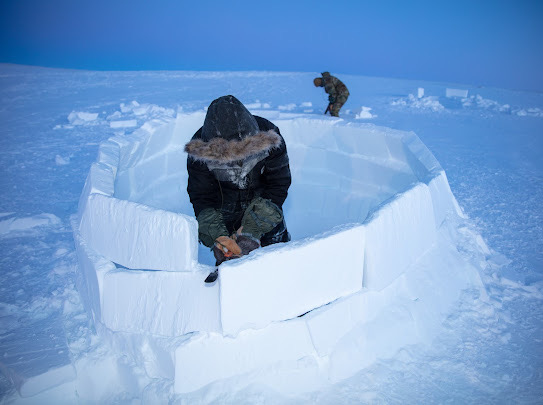
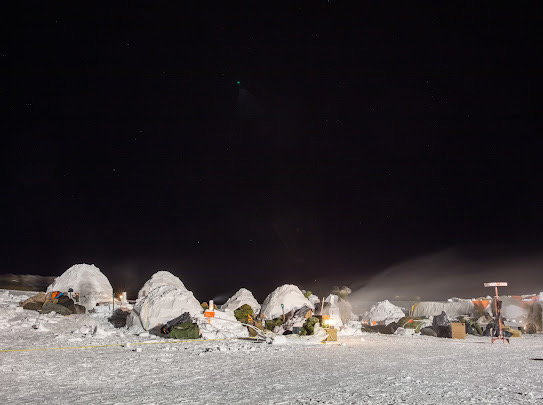

Because of these credentials of both climate and commitment, in 2020, the National Guard Bureau designated the 133rd CRT as the lead Arctic unit and asked them to put together a training plan for what contingency operations look like in an Arctic environment.
The 133rd CRT is continuously improving their training operations and providing opportunities to train others in the art of Arctic survival. 2023 saw their second year hosting Operation Arctic Butterfly – a homegrown training exercise that brings together approximately 40 service members (open to all Air, Army, National Guard, Reserve, and Active-Duty personnel) and teaches them how to operate for five days in an Arctic landscape.
“My team has been to a lot of Arctic survival schools but there really is no longer an Arctic operations school,” said Wickenhauser. “So instead of just surviving, say in the case of a plane crash, [this exercise teaches people] how does one operate in the cold? Not just survive but thrive in the Arctic?”
The 133rd CRT plans to propose the third iteration of Operation Arctic Butterfly as a National Guard Bureau supported event and continue to expand training capabilities that the bold north of Minnesota has to offer to the rest of United States. In addition to increasing training, the 133rd CRT is increasing their membership. As of April 1, the 133rd Contingency Response Flight transitioned to a Team, which allowed them to increase their personnel manning to 31 individuals with a diverse skillset to include security forces, communications, aircraft maintenance, and more. This transition increases their capabilities to be a fully self-sufficient team, meaning they can be dropped north of the Arctic Circle and survive, operate, and thrive for up to five days unsupported.
Being the Land of 10,000 Lakes has its advantages, especially when said lakes are frozen over for a third of the year.
“Minnesotans are just inherently prepared throughout the course of most [of their] lives to deal with Arctic situations,” said Wickenhauser.
Thus, the Minnesota National Guard continues to be always ready, always there to support the National Guard and the DoD in Arctic operations.
By Army Staff Sgt. Sydney Mariette
Minnesota National Guard

